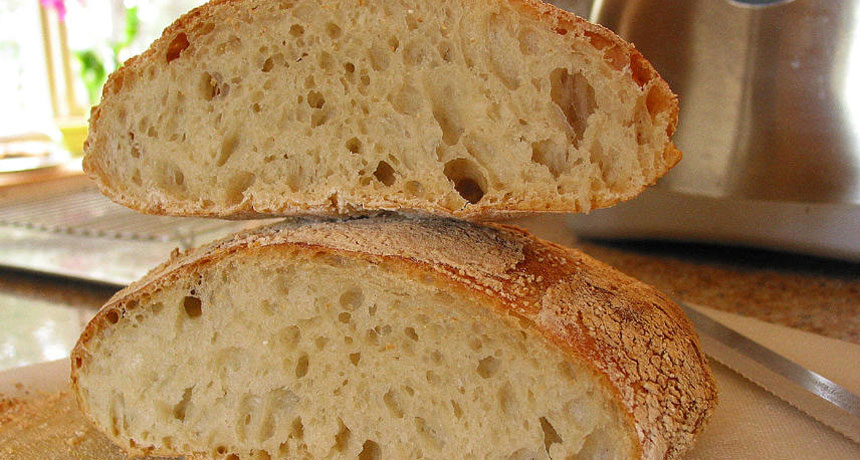Scientists Say: Yeast
These tiny organisms make bread rise and beer brew

The holes in this delicious-looking bread result from the actions of yeast, which break down carbohydrates and burp out carbon dioxide gas.
sierravalleygirl/Flickr (CC-BY-NC 2.0)
Yeast (noun, “YEEst”)
These are single-celled fungi. Yeast are extremely common in the environment, and most are harmless. Some species do cause disease in people, but others people can’t live without. Yeast get their energy from carbohydrates such as sugars. They break down these carbohydrates in a process called fermentation, which produces carbon dioxide gas and alcohol. Without carbon dioxide gas from yeast, bread would not rise. Yeast are also used to give drinks such as beer and wine their alcoholic kick.
Yeast are very important organisms in scientific research. Scientists can easily insert genes — molecular instructions for producing proteins — into yeast, even genes from other species. By putting an unknown gene into a yeast and seeing what it produces, scientists can learn more about the gene’s function. They can also insert genes into yeast to make useful products. For example, yeast with human genes make insulin. The body uses this hormone to convert glucose from food into energy. But people with diabetes often cannot make their own insulin. Insulin from yeast can be purified and given to people.
In a sentence
When yeast eat sugar and burp out carbon dioxide in bread dough, the gas gets trapped in a protein matrix of gluten, and the bread puffs up.
Follow Eureka! Lab on Twitter
Power Words
(for more about Power Words, click here)
carbohydrates Any of a large group of compounds occurring in foods and living tissues, including sugars, starch and cellulose. They contain hydrogen and oxygen in the same ratio as water (2:1) and typically can be broken down to release energy in the animal body.
carbon dioxide (or CO2) A colorless, odorless gas produced by all animals when the oxygen they inhale reacts with the carbon-rich foods that they’ve eaten. Carbon dioxide also is released when organic matter (including fossil fuels like oil or gas) is burned. Carbon dioxide acts as a greenhouse gas, trapping heat in Earth’s atmosphere. Plants convert carbon dioxide into oxygen during photosynthesis, the process they use to make their own food.
diabetes A disease where the body either makes too little of the hormone insulin (known as type 1 disease) or ignores the presence of too much insulin when it is present (known as type 2 diabetes).
fermentation (v. ferment) The metabolic process of converting carbohydrates (sugars and starches) into short-chain fatty acids, gases or alcohol. Yeast and bacteria are central to the process of fermentation. Fermentation is a process used to liberate nutrients from food in the human gut. It also is an underlying process used to make alcoholic beverages, from wine and beer to stronger spirits.
gene (adj. genetic) A segment of DNA that codes, or holds instructions, for producing a protein. Offspring inherit genes from their parents. Genes influence how an organism looks and behaves.
gluten A pair of proteins — gliadin and glutenin — joined together and found in wheat, rye, spelt and barley. The bound proteins give bread, cake and cookie doughs their elasticity and chewiness. Some people may not be able to comfortably tolerate gluten, however, because they have an allergy to it or suffer from celiac disease.
hormone (in zoology and medicine) A chemical produced in a gland and then carried in the bloodstream to another part of the body. Hormones control many important body activities, such as growth. Hormones act by triggering or regulating chemical reactions in the body. (in botany) A chemical that serves as a signaling compound that tells cells of a plant when and how to develop, or when to grow old and die.
insulin A hormone produced in the pancreas (an organ that is part of the digestive system) that helps the body use glucose as fuel.
yeast One-celled fungi that can ferment carbohydrates (like sugars), producing carbon dioxide and alcohol. They also play a pivotal role in making many baked products rise.







